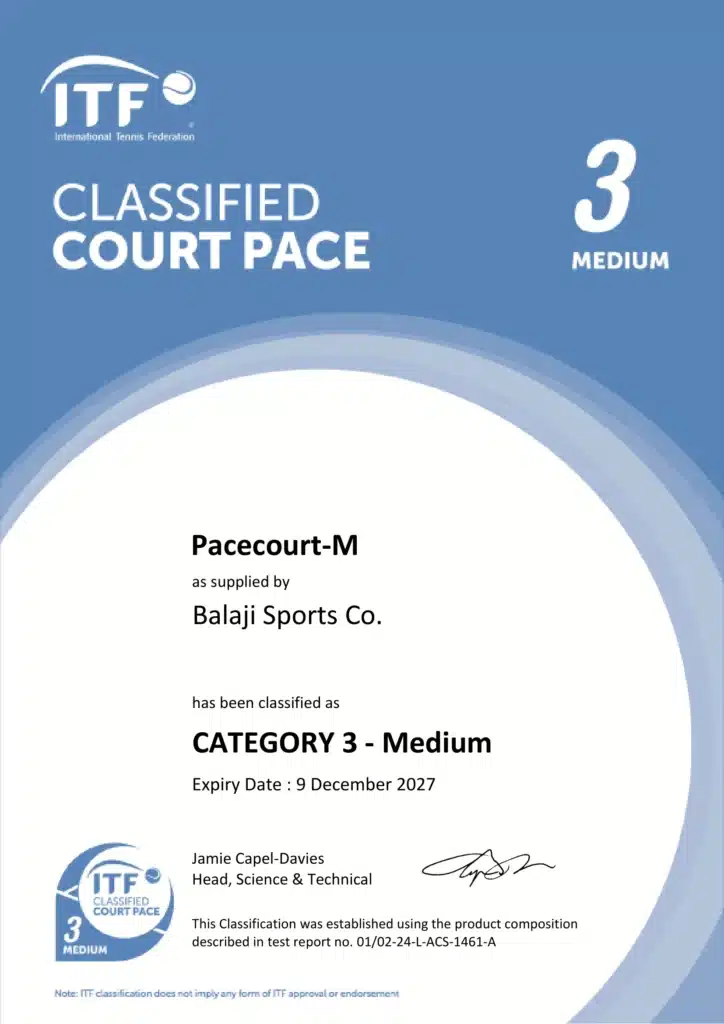The Effect of sport Court dimension on Player strategies, and Team Coordination
Introduction Generally speaking, an athlete’s ability to plan their tactics, move around the court, and communicate with teammates is largely determined by the sports court dimension when they play. Whether it’s a volleyball court, tennis court, or basketball court, the space occupied by the playing surfaces affects every aspect of the match. Additionally, the choice of materials is crucial, particularly since outdoor sports courts are likely to endure weather and have improved performance and longevity. Many athletic facilities have begun to install acrylic flooring for outdoor courts in the last few decades. In addition to being reasonably priced, this artificial course offers athletes a superior grip and a more seamless and improved playing experience. What impact does the court’s size have on a game, other than these materials? We’ll examine how Sports court dimension impacts tactics, mobility, teamwork, and coordination in this blog, paying particular emphasis to acrylic sports surfaces. Lastly, we will examine real-world instances that illustrate how the court’s dimensions and chosen surface affect the situation. Understanding Sport Court Dimensions: A Foundation for Strategy Every sport has specific parameters that its participants must stay within to perform at their best. The differences in basketball, volleyball, pickleball, and tennis court sizes and how they affect the dynamics of play are examples of this. Basketball Court Dimensions: Impact on Movement and Strategy For professional-level play, basketball courts are 94 feet by 50 feet and are designed to improve agility, fast action, and transitional speed. Conversely, smaller courts may limit the space available for positional play and dribbling, forcing players to go closer and use their ball-handling and passing skills. Nonetheless, the entire court is roomy enough to encourage quick breaks, making lengthy rebound passes and energetic plays more common and feasible. Tennis Court Dimensions: Precision and Control The playing area for singles is only 27 feet wide, compared to the typical tennis court’s dimensions of 78 feet long by 36 feet wide. Especially in singles matches, the sports court dimension affect both offensive and defensive. The confinement is standard due to the acrylic nature of the court, allowing players to aim precisely and put their shots with accuracy. The players can use spin techniques on the durable, smooth surface, which also helps them maintain control when facing prolonged resistance. Volleyball Court Dimensions: Team Coordination and Movement Volleyball is played on a court measuring 18 by 9 meters, with a net set lengthwise in the middle of the surface. Due to the dimensions, there is not much room for error in placement; therefore, both athletes must maintain balance. Everyone’s interactions or dynamics in a typical court are based on appropriate orientation, communication, and defense—all of which are crucial to the proceedings. Because of the size, players can also move very freely and make many decisions because they have to move fast through space. Because acrylic has strong shock absorption and anti-slip properties, flooring materials for outdoor volleyball can accommodate players’ mobility. This is especially true given how volleyball is a sport that requires rapid side-to-side movement and leaping. Movement and Team Coordination on Varying Court Sizes In team sports, the size of the court directly affects how the game is played out. A larger playing space might force players to walk around more, which would lead to increased interaction between players. In severe circumstances excepted, smaller courts would typically result in closer formations and, as a result, superior ball control with quicker and more precise movement bursts. Pickleball: Managing Smaller Dimensions Pickleball courts measure 44 feet by 20 feet, which is significantly less than the dimensions of a basketball or tennis court. The players must be extremely alert and collaborate well with their doubles partners because of the drastic drop in size. The game is more intense due to its small size, which also reduces the error margin. Pickleball court flooring with acrylic surfaces enable players to move quickly and with control, even in tiny spaces. The level surface reduces the possibility of trips and falls, allowing players to focus on their game. Basketball and Team Coordination The size of the court has an impact on player spacing in team sports, such as basketball. Teams can roam about, execute plays, and use the entire length and width of the floor when playing on a typical basketball court. Less time is wasted on offense or defense on thinner courts, which improves player fitness and teamwork. Enhancing Gameplay with Acrylic Flooring Not only is acrylic flooring a durable surface choice for outdoor courts, but it’s also a revolution. It reduces weather-related damage and offers improved grip and ball response. Because of the surface’s consistency, athletes may focus on their performance rather than being distracted by the floor’s potential wobble or the ball’s unpredictable bounce. Whether it’s pickleball, basketball, tennis, or volleyball, the sports court dimension combined with acrylic flooring create the ideal environment for strategy, mobility, and coordination. The use of acrylic ensures maximum playing comfort, longevity, and ease of maintenance for sporting facilities. Key Benefits of Acrylic Flooring: Case Studies Case Study: Upgrading a Public Park Tennis Court To improve the playing experience for the local community, the Delhi Public Park decided to upgrade its aging tennis courts. They opted for acrylic floors, understanding their advantages over the court’s performance and resilience. Project Overview: The Process: Initially, the project started with taking off the old broken surface. A primer was then put on the prepared and leveled surface for strong adhesion. This was followed by multiple layers of acrylic coating, which yielded a smooth and long-lasting finish. Finally, markings of official dimensions were made on the courts so that they could agree with the required standards. Results: The enhanced courts received high satisfaction rates from the locals. The players acknowledged the better grip and even ball bounce that significantly improved their play. Additionally, the bright color of the new surface made those courts more attractive, hence increasing their utilization. Case Study: Enhancing a University’s Tennis Facilities Tennis facilities at a university




